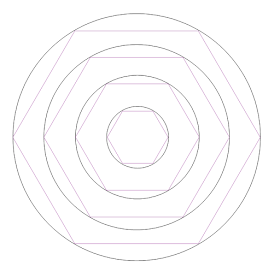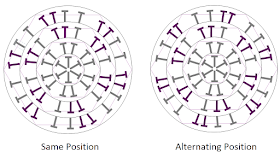- Find or draw your image - any size will do and this can be a physical picture or electronic. Simple images work better for a good final effect.
- Mark even intervals around the edges - for a physical picture, mark with ruler and pencil - for an electronic image, use a program to evenly space markers around your edges (MS paint is the poor man's photoshop) The smaller and more detailed your image is, the more sections you will need.
- Use the marks to draw an even grid onto the image.
- Prepare your larger surface that you will transfer to and make sure it's approximately the same proportions as your image (we used one side of a huge cardboard box)
- Divide the length and width of your large surface into as many sections as you have on your small image (if your image is 10 one inch sections across, you'll need to divide the width of your large surface into 10 sections) Do the same for the height and leave a slight border around the edges depending on the material you're working with. Make sure your spacing is even.
- Draw the grid on your large surface. A yard stick may come in handy.
| Here we will pretend I remembered to take a picture of the grid before drawing and cutting. |
Now it's time to draw. Match up your image grid to your surface grid using numbers or letters and draw the image onto your surface square by square. This method allows you to accurately draw any image without needing a lot of artistic ability because you're only responsible for one square at a time. Just draw exactly what's in each square onto your new object.
Then cut your image for the stencil using an exacto blade or utility knife. Take your time with this step to cut exactly on the lines and trim any edges to smooth out the exposed edges.
| All drawn and cut out! |
Then we cut the whole side off of the box (leaving it in tact up until this point helped to keep it stabilized while cutting, which puts pressure on the material.) If needed, add some painter's tape around the edges. We found this to be necessary because our cardboard was very thick and had 2 layers inside.
| All inside edges taped up. |
| Test run - looks great! |
This was a surprisingly quick project once we finally got our act together and started on it. Now it's time to adorn our bunker with the mythosaur for the glory of Mandalore.


